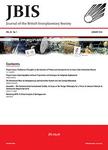版权所有:内蒙古大学图书馆 技术提供:维普资讯• 智图
内蒙古自治区呼和浩特市赛罕区大学西街235号 邮编: 010021

作者机构:Univ Florida Dept Mech & Aerosp Engn Gainesville FL 32611 USA
出 版 物:《JBIS-JOURNAL OF THE BRITISH INTERPLANETARY SOCIETY》 (JBIS J. Br. Interplanet. Soc.)
年 卷 期:2004年第57卷第7-8期
页 面:226-236页
核心收录:
学科分类:08[工学] 0708[理学-地球物理学] 0704[理学-天文学] 0825[工学-航空宇航科学与技术]
主 题:formation flying reconfiguration control collision avoidance genetic algorithm sliding mode control
摘 要:The concept of the formation flight system dates back to 1984. In recently years, the innovative idea of this distributed system has been seriously considered for numerous missions, such as NMP (New Millennium Program), Steller Imager, MAXIM (Micro-Arcsecond X-ray Imaging Mission), TPF (Terrestrial Planet Finder), SPHERES, and UoSat-12. One of the attractive advantages of the formation flying system over the conventional large-size monotonic satellite is the flexibility and reliability. In order to achieve this, multiple vehicles maintaining and reconfiguration control is one of the key techniques need to be solved in the near future. Leader-follower structure is a widely used architecture for the formation. Based on this simplified pair, different dynamic models are derived and corresponding controllers are designed. In this work, first, the generalized dynamics model including the coupled orbit and orientation models is briefly discussed. Sliding mode control and boundary layer control based on the genetic algorithm is proposed as the control strategies. After that, formation configuration and reconfiguration architecture are discussed. Finally, a five-satellite formation is used as an example to validate the formation maintenance and reconfiguration method.